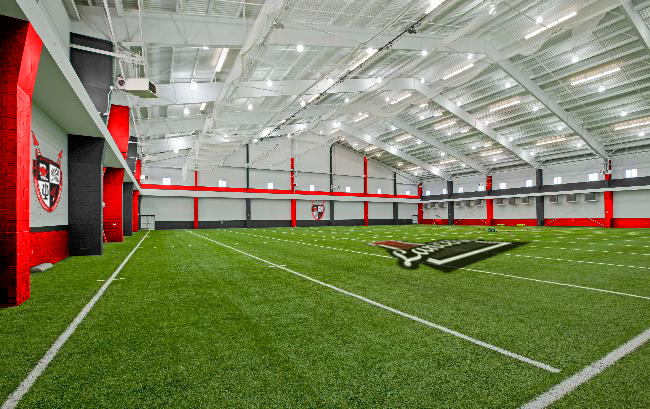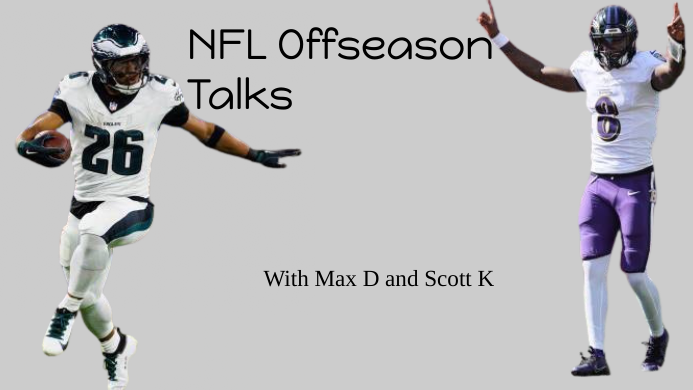As weather cancellations increase, moving outdoor sports inside might be the answer
Graphic by Spencer Derrenberger
A concept for an indoor stadium.
September 24, 2018
This fall 2018 sports season, at least one sporting event a week has been canceled. The constant postponement of games and practices has had a negative effect on all teams, ranging from their on-field performance to their chemistry. Given that these weather cancellations are becoming more common with time, schools must begin to explore alternative options for the near future.
These weather cancellations could become irrelevant if counties were to introduce moving outdoor sports to an inside setting, such as the addition of cover-up domes or indoor athletic facilities for schools to use.
These cancellations have many negative effects for those involved with running the event. Money is wasted buying perishable food for concessions. Rescheduling games can also cause conflicts, which can result in sports such as soccer and baseball having to play two games back-to-back.
Athletic Director for FCPS Kevin Kendro shares many concerns about the widespread effect of canceled sporting events. “The postponement or cancellation of athletic events affects FCPS and our individual schools in many ways. Our athletic directors must work with the opposing school’s athletic director, as well as the officials, transportation, security, boosters, and others to coordinate rescheduled events. Additionally, our parents and spectators have to adjust their personal schedules.”
These effects call for change, and the process of adding cover-up domes or indoor stadiums to counties for the use of the schools is one step closer to eliminating weather-based cancellations.
Cover-ups could eliminate rain and lightning-based cancellations entirely. Costing around $100,000 at the least, these cover-ups would require significant funding from the county, schools, and outside sponsors. Cover-ups would not be able to support all athletic fields per school, and multiple cover-ups would become a big financial burden on the schools and counties. The schools, along with their boosters, could raise enough money over time for such an addition.
Another alternative that could prove viable in the future is the addition of a shared indoor stadium and athletic facility. An indoor stadium could house multiple outdoor sports and could potentially accommodate the same amount of fans that are present at outdoor stadiums. Different teams could schedule practices on a different field in the facility, and contests could be scheduled without the possibility of a weather-caused cancellation.
From a monetary standpoint, few stadiums could be constructed per county, as the cost to maintain an indoor stadium is higher than the cost of maintaining an outdoor stadium. Although such an investment would attract many high-level funders, the cost of maintaining a facility and for the construction of it would be in the millions.
Dangerous temperature affects the athletes and teams more than anything else. Rising temperatures have even contributed to heat strokes, especially in football. According to the National Center for Catastrophic Sports Injury Research (NCCSIR), there has been an average of three heat stroke deaths per year in all levels of football per year since 1995.
In addition to heat, thunderstorms and lightning are a constant threat. All FCPS sporting events will be delayed and/or postponed if there is lighting in the general vicinity of the area. Football players are more at risk than anyone with a large amount of equipment necessary for them to be able to play and to stay safe
Varsity football player Graeson Ruch would love to see the weather improve so the football team can maintain a consistent schedule.
“There is a different energy when we get to play on Friday nights,” he said.
The varsity baseball team has also been affected by the recent bad weather. In spring 2018, they had their first seven games canceled and postponed and constantly had to practice in the gymnasium instead of an outdoor baseball field.
Baseball player Garrett Schwartzbeck thinks that the weather cancellations put their team at a disadvantage. “It was terrible because we couldn’t practice any situational plays, which was a result of not having the field to use. We used the gym the most we could, and still stressed continuing to work hard despite the circumstances.”
There are many questions as to how the scheduling of sporting events will be handled in the future, such as how sports cancellation policy in regards to weather will be dealt with. The policy is handled by the Maryland Public Secondary Schools Athletic Association (MPSSAA), who work in tandem with the Maryland Department of Education. The cancellation policy, however, is for student’s and fan’s safety.
According to Mr.Kendro, a change to policy is unlikely to take place. “Because of the way the MPSSAA defines and structures the three sports seasons (fall, winter, and spring), FCPS will continue to schedule athletic events in the same manner. ”
The price necessary for such a change may not be realistic, but as we head into a future with varying climate change, an investment in transitioning outdoor sports inside could be worth it and pay off.






